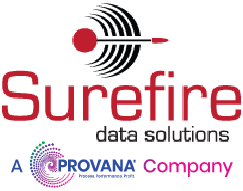The year is drawing quickly to a close, and the holiday season had us scrambling; both in and out of work. We craved a quicker ticking of the clock, and wheedled with our support teams to get their reports turned in early, so that projects may be completed, so that time may be enjoyed again. As 2016 grinds to a halt, we look to 2017 for hope; a reboot, another chance, the perfect do-over for the mistakes or regrets in the current year. We all know the drill. Unlike our best intentions to eat healthier, give up smoking, or whatever the shtick is this time around to be a better person, we know that at least the digital world is going to keep on growing and changing regardless.
As organizations jot down their new year’s resolutions and business goals, they should make sure that an optimized business intelligence platform is at the top of the list. The idea of “big data” is nothing new by this point, and it shouldn’t surprise anyone that data’s impact isn’t going to fade in 2017. The only difference foreseen on this point is that as the commonality of “big data” grows, the buzzword itself will be used less, and more pointed, specific terminology will be used in its stead. In an interview with Dan Sommer, Senior Director of Global Market Intelligence at Qlik, and former Gartner analyst, the upcoming trends for data in the new year have been mapped out for us. This past year has seen an influx of data from several different sources, resulting in a chaotic explosion of data and information, and what Sommer refers to as “a move toward information activism.” This “activism,” paired with the market boom in IT-related specialties, means a greater need for data literacy overall. The key three points made by Sommer for trends and keeping a competitive edge are as follows: scalability, governance, and the cloud.
Database scalability is essentially the ability of a system to gauge workload and keep up with demand, large or small. Infosecurity provides the two approaches to managing these systems: vertical database scalability, or horizontal database scalability. The vertical method “adds more capacity to a single machine,” and its ease lies in only having a single system to manage. The difficulty in vertical scalability is that many variables in workload are not ideal for the vertical system, which is why a lot of cloud providers avoid this practice. Horizontal database scalability spreads capabilities over a number of machines, and having multiple databases, or “scaling out,” uses simple hardware with a primary copy and distributions across the different machines. The fault in horizontal scalability is that not many products are horizontally scalable, and connecting only one primary copy creates a bottleneck if a system is more hands-on.
The “essential WHO-WHAT-WHEN-WHERE-WHY-HOW information about data governance” comes from The Data Governance Institute. Data governance refers to decision making and general supervision of all “data related matters.” It could have to do with rules and compliance, decisions, accountabilities, or other forms of data control. Governance programs can be managed by IT, Data Managers, or Business Operations, and Sommer maintains that governance is essential to avoid corrupting usable, “good” data with bad data. These programs need to start out with a laser-focus on a predetermined issue or goal, and broaden the concerns addressed from there.
Where a data center houses data, servers, and other equipment on-site, using cloud computing allows for off-site, external storage that is not limited to a local network. A quote from Business News Daily still holds true in the coming year, claiming that “cloud computing saves businesses time and money by boosting productivity, improving collaboration and promoting innovation.” According to the interview with Sommer, we should be expecting “hybrid cloud and multiplatform to emerge as the dominant model in 2017,” as one cloud won’t be enough to sustain systems as data needs continue to rise. Analyzing data without external context will not have the same desirability as in years past, and combinations of data will aid governance by “cross-checking whether data is polluted or not.”
As you dolefully pick at your salad this January, be comforted by the fact that the power of big data is going to see us through. Information activists in the business and tech worlds have the competitive edge in the Information Age, and strong data governance, scalability, and cloud storage are the foundations to build on in the coming year.


